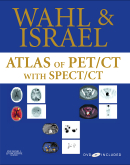|
|
|
| |
 |
|
|

|
 推薦指數:
推薦指數:





|
|
- 內容介紹
|
Atlas of PET/CT with SPECT / CT with DVD
By Richard L. Wahl, MD and Ora Israel
304 pages 1000 ills
Trim size 8 1/2 X 10 7/8 in
Copyright 2008
Description
This state-of-the-art, lavishly illustrated atlas is your visual guide to fusion imaging of all parts of the body. It combines CT with molecular imaging modalities such as PET and SPECT, resulting in significantly enhanced resolution of tumors and other disease processes that give you a unique view into their diagnosis, localization, and spread. Edited by the pioneers of fusion imaging, this new resource will help you more accurately diagnose and effectively guide treatment of human malignancies, including head and neck, lung, colon, ovarian, breast, lymphoma, melanoma, and many others, as well as other diseases such as infections.
Key Features
Emerging techniques such as PET/CT and SPECT/CT offer better diagnostic accuracy.
More than 1,000 full-color images help you solve your toughest diagnostic challenges.
Hundreds of case studies of normal and abnormal findings provided by two leading academic centers in nuclear medicine let you compare your findings with theirs.
Fusion imaging lets you provide the most appropriate treatment based on your findings.
Summaries and Key Points boxes for each case assist you in locating key content more easily.
The accompanying DVD-ROM, which contains many fully navigable PET/CT and SPECT/CT cases for viewing and analysis, with cross-modality image fusion offers exceptional visual guidance. This DVD-ROM uses RAPID Software provided by Hermes Medical Solutions, www.hermesmedical.com.
Table of Contents
1. PREFACE
2. TECHNICAL CONSIDERATIONS FOR PET/CT AND SPECT/CT
3. PET/CT OF THE BRAIN
3.1 Normal pattern 3.2 Benign abnormalities 3.2.1 Congenital encephalomalacia 3.2.2 Post-surgical changes 3.2.3 Radiation necrosis 3.3 Tumors 3.3.1 Primary brain tumor 3.3.2 Metastases 3.3.3 Residual tumor & post-surgical changes 3.3.4 Recurrent tumor & radiation necrosis 3.3.5 Pituitary adenoma & stroke 3.4 Neurological disorders 3.4.1 Epilepsy – classic interictal pattern 3.4.2 Epilepsy – interictal pattern & cerebellar diaschisis 3.4.3 Epilepsy – interictal & decreased cerebellar uptake 3.4.4 Alzheimer’s disease – diffuse pattern 3.4.5 Alzheimer’s disease – frontal predominance
4. PET/CT OF THE HEAD & NECK
4.1 Normal pattern 4.2 Physiologic, Artifacts & Pitfalls 4.2.1 Artifact - miss-registration due to patient movement 4.2.2 Physiologic – muscles uptake in tongue 4.2.3 Physiologic
|
|
|

